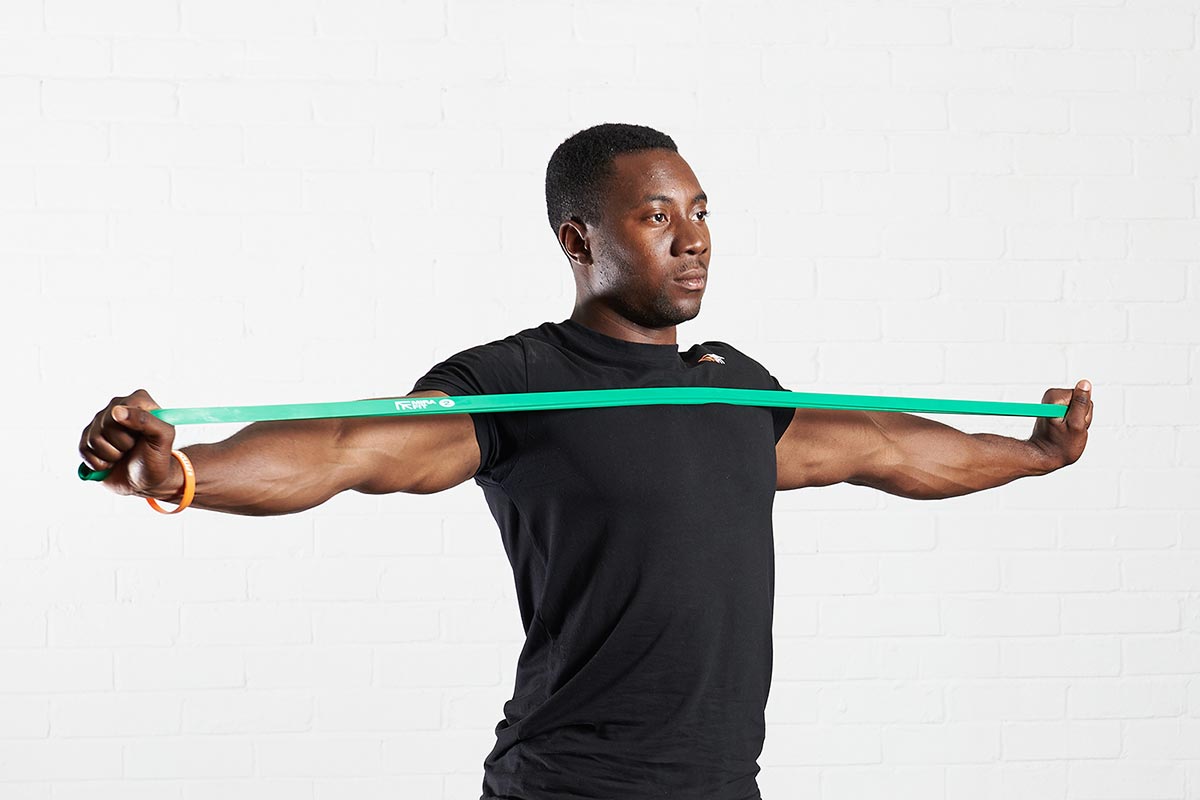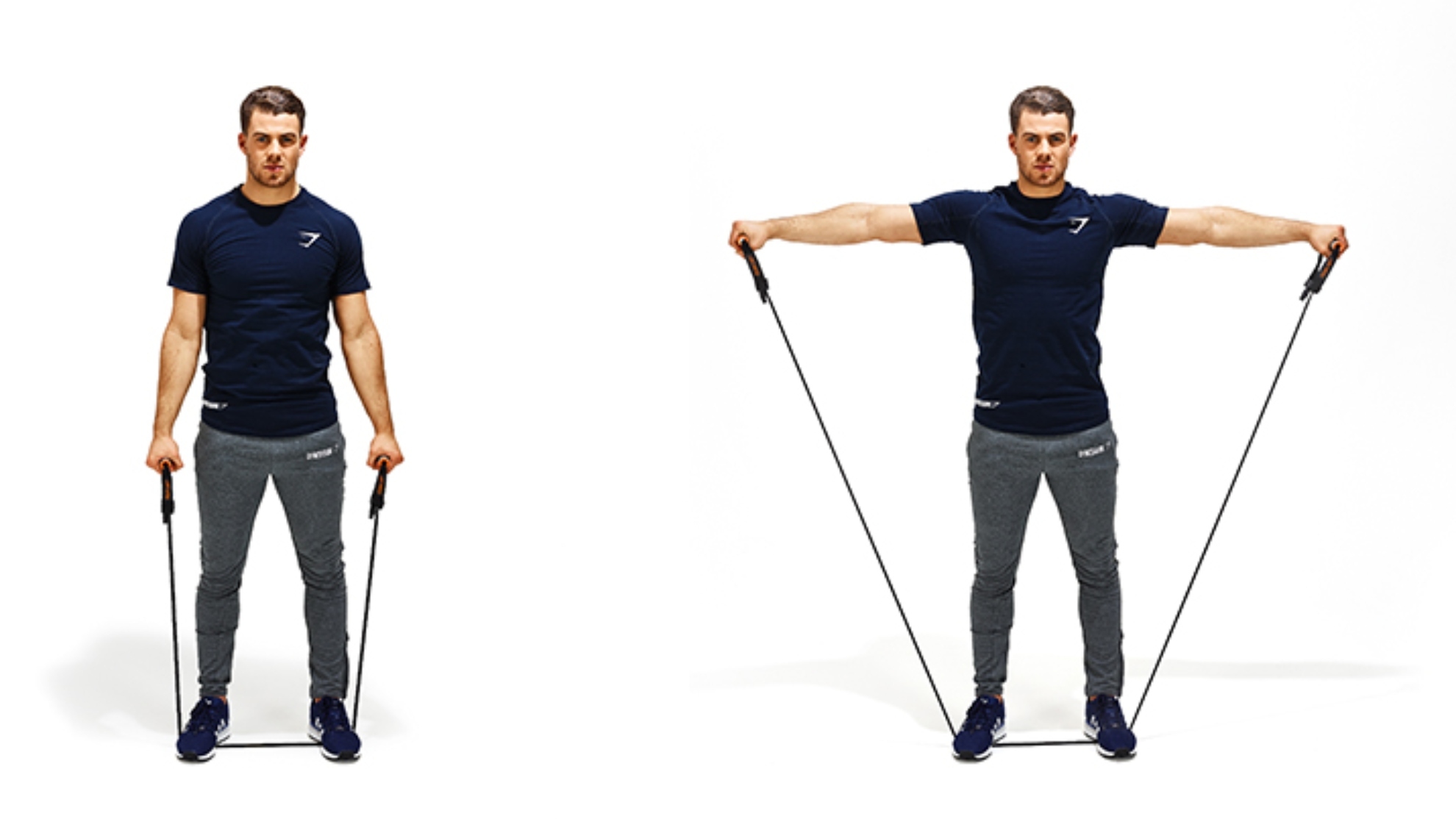Shoulder mobility can be a game-changer, allowing you to perform daily activities with ease and keep injuries at bay. Resistance bands offer a simple yet effective way to enhance shoulder mobility right from the comfort of your home. A versatile piece of equipment, resistance bands cater to a wide range of exercises that can improve shoulder flexibility and strength without requiring a gym setup.
Historically, resistance bands have been employed in rehabilitation settings due to their low impact and high efficacy. According to the American Council on Exercise, resistance bands can increase muscle activation and improve joint stability. By integrating resistance band exercises into your routine, you not only enhance shoulder mobility but also ensure a balanced development of shoulder muscles.

Benefits of Resistance Band Shoulder Workouts
Resistance band shoulder workouts offer a unique blend of simplicity and effectiveness. The bands provide varying levels of resistance, making them suitable for all fitness levels. This versatility means they can be used for both strengthening and rehabilitation.
Using resistance bands helps improve shoulder flexibility and range of motion. This is crucial for performing daily activities without discomfort. Additionally, they help in building muscle strength and endurance over time.
A significant benefit of resistance bands is their portability. You can use them anywhere, whether at home or while traveling. This makes it easier to stick to your workout routine.
Another advantage is that resistance bands offer a low-impact workout. This reduces the risk of injury compared to using heavy weights. It’s a safer way to achieve strong and mobile shoulders.
Types of Resistance Bands for Shoulder Workouts
Resistance bands come in various types, each serving specific workout needs. Selecting the right type is crucial for effective shoulder exercises. Let’s explore the most common types available.
Loop Bands
Loop bands, also known as mini bands, are circular and versatile. They are often used for lower body exercises but can be extremely effective for shoulders. The compact nature of these bands makes them easy to carry and store.
These bands are available in different resistance levels, from light to heavy. This allows for customizable workouts depending on your fitness level. They’re especially useful for exercises like shoulder raises and external rotations.
Using loop bands also helps in maintaining consistent tension during workouts. This ensures a comprehensive shoulder exercise routine. They’re great for mobility and stability exercises.
Tube Bands with Handles
Tube bands are cylindrical and usually come with handles for better grip. These bands are ideal for full-body workouts including shoulder exercises. The handles provide extra comfort and control during use.
One major advantage is the range of motion they offer. You can perform exercises like shoulder presses and rows more efficiently. These bands also come with attachments like door anchors for added versatility.
Different resistance levels are available in tube bands as well. This flexibility enables you to gradually increase workout intensity. The combination of tubes and handles ensures a well-rounded shoulder workout.
Flat Therapy Bands
Flat therapy bands are often used in physical therapy settings. These bands are thin, wide, and highly elastic. They are suitable for gentle and controlled shoulder workouts.
These bands are excellent for rehabilitative exercises. They help in improving shoulder mobility and flexibility. The elasticity of flat therapy bands allows for smooth and precise movements.
Flat bands are also lightweight and easy to store. This makes them convenient for home use. They are ideal for stretching and low-impact shoulder exercises.
Important Precautions while Performing Shoulder Workouts
Before you start any shoulder workouts, it’s essential to warm up properly. A good warm-up prepares your muscles and reduces the risk of injury. Spend at least 5-10 minutes on light cardio and dynamic stretches for your shoulders.
Maintaining proper form is crucial during shoulder exercises. Incorrect form can lead to strains and injuries. Always keep your movements controlled and avoid overextending.
It’s important to gradually increase the intensity of your workouts. Start with lighter resistance bands and slowly progress to heavier ones. This helps prevent sudden muscle overload.
Finally, listen to your body. If you experience pain or discomfort, stop the exercise immediately. Ignoring pain can lead to serious injuries.
Top Resistance Band Exercises for Shoulder Mobility
Resistance bands are perfect for improving shoulder mobility. Here are some top exercises that target shoulder flexibility and strength. Incorporate these into your routine for better movement and less pain.
One effective exercise is the shoulder external rotation. Secure the band to a stable object. Keep your elbow at a right angle and move your forearm away from your body.
Another great option is the band pull-apart. Hold the band in both hands and stretch it by moving your hands apart. Make sure your arms remain straight throughout the exercise.
The face pull is another excellent choice. Attach the band to a high point and pull it towards your face. This exercise targets the rear deltoids.
You can also try the shoulder press with a band. Stand on the band and hold the handles at shoulder height. Push your arms upward until they are fully extended.
Lastly, the front raise is beneficial. Step on the band and hold it with your hands. Lift your arms straight in front of you to shoulder height and then lower them back down.
Effective Workout Routine for Improved Shoulder Mobility
Creating a balanced workout routine for shoulder mobility is key to achieving the best results. Start with a thorough warm-up to prepare your muscles. Light cardio and dynamic stretches are ideal warm-up activities.
Next, incorporate specific resistance band exercises such as shoulder external rotations and band pull-aparts. Perform each exercise for 3 sets of 12-15 reps. This helps to enhance both flexibility and strength.
Dedicate particular days for shoulder-focused workouts within your weekly routine. For example, you could target shoulders on Mondays, Wednesdays, and Fridays. This allows adequate recovery time between sessions.
Always pay attention to maintaining proper form to prevent injuries. Using controlled movements ensures you engage the right muscles effectively. Don’t rush through exercises.
Adjust the resistance level as you progress to keep challenging your muscles. Gradually increasing the intensity will aid in continual improvement. Monitor your progress and make necessary adjustments to your routine.
Lastly, end each session with cool-down stretches. This helps in reducing muscle soreness and improves flexibility. Consistency in these practices will lead to significant improvements in shoulder mobility.
Evaluating Progress and Overcoming Plateaus
Tracking your progress is crucial when working on shoulder mobility. Use a journal or an app to record your workouts and improvements. Document your reps, sets, and resistance levels. This will help you see your growth over time.
To measure your progress, perform regular mobility tests. Simple range-of-motion tests can be very telling. Compare how far you can move your shoulder now versus a few weeks ago.
Plateaus can be frustrating but are a normal part of any fitness journey. Changing up your routine can help you overcome these. Incorporate new exercises or increase the resistance. This can provide the stimulus your muscles need to grow.
Another effective strategy is to adjust your workout frequency. Adding an extra day of shoulder exercises or changing rest days can make a difference. Listen to your body to find the best routine.
Keep yourself motivated by setting small, achievable goals. Rewards for reaching these milestones can boost motivation. Celebrate your successes to stay committed to your fitness journey.
Lastly, consider consulting a fitness professional if you hit a long-term plateau. A trainer can provide personalized advice and strategies. Sometimes an expert eye can spot what you might miss.
Key Takeaways
- Resistance bands improve shoulder mobility with flexible resistance training.
- Exercises like shoulder rotations and band pull-aparts enhance range of motion.
- Face pulls are effective for strengthening shoulder muscles at home.
- Resistance bands are convenient and low-impact for easy home use.
- You don’t need a gym setup to boost shoulder health with these exercises.

Frequently Asked Questions
Get answers to some common questions about using resistance bands for shoulder workouts. These insights will help you make the most of your home exercise routine.
1. What are the benefits of using resistance bands for shoulder exercises?
Resistance bands offer versatile and adjustable levels of resistance, making them suitable for all fitness levels. They help improve shoulder strength, flexibility, and range of motion in a low-impact manner.
Additionally, these bands are portable and convenient, allowing you to perform effective workouts anywhere. Using them consistently can lead to significant improvements in shoulder health without needing heavy equipment.
2. How often should I do shoulder workouts with resistance bands?
A good starting point is to incorporate shoulder exercises into your routine 2-3 times per week. This frequency allows your muscles time to recover while still providing consistent training stimuli.
It’s essential to listen to your body and avoid overworking the same muscle groups. Adjust the frequency based on how you feel and your overall fitness goals.
3. Can resistance band exercises help with shoulder pain?
Yes, resistance band exercises can be effective in alleviating some types of shoulder pain by strengthening muscles around the joint. Improved strength and flexibility can reduce strain on problematic areas.
However, it’s crucial to consult a healthcare professional before beginning any new exercise regimen if you’re experiencing severe or persistent pain. Proper form and technique are also vital in preventing further injury.
4. Are there specific warm-up routines I should follow before doing resistance band shoulder workouts?
A proper warm-up is key to preparing your shoulders for exercise and minimizing injury risk. Simple cardio activities like jumping jacks or arm circles can increase blood flow to your muscles.
You can also perform dynamic stretches focusing on the shoulders such as arm swings or light band exercises at lower intensities as part of your warm-up.
5 . Do I need different types of resistance bands for various exercises?
Using different types of resistance bands can provide more varied and effective workouts . Loop bands , tube bands ,and flat therapy bands all have unique benefits .
Switching between these options enables better targeting.If each type offers distinct advantages ,you might find some more suited certain movements than others.

Conclusion
Resistance band shoulder workouts offer a practical and efficient way to improve shoulder mobility and strength. Their versatility allows you to target different muscles while minimizing the risk of injury. They also provide the convenience of working out at home.
For optimal results, incorporate a variety of exercises into your routine and follow safety precautions. Evaluating your progress regularly can help you overcome plateaus and stay motivated. Consistency and proper form are essential for achieving your fitness goals.
